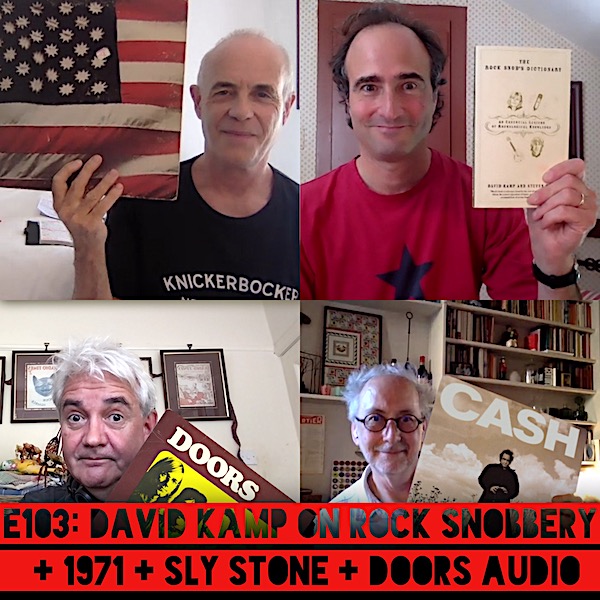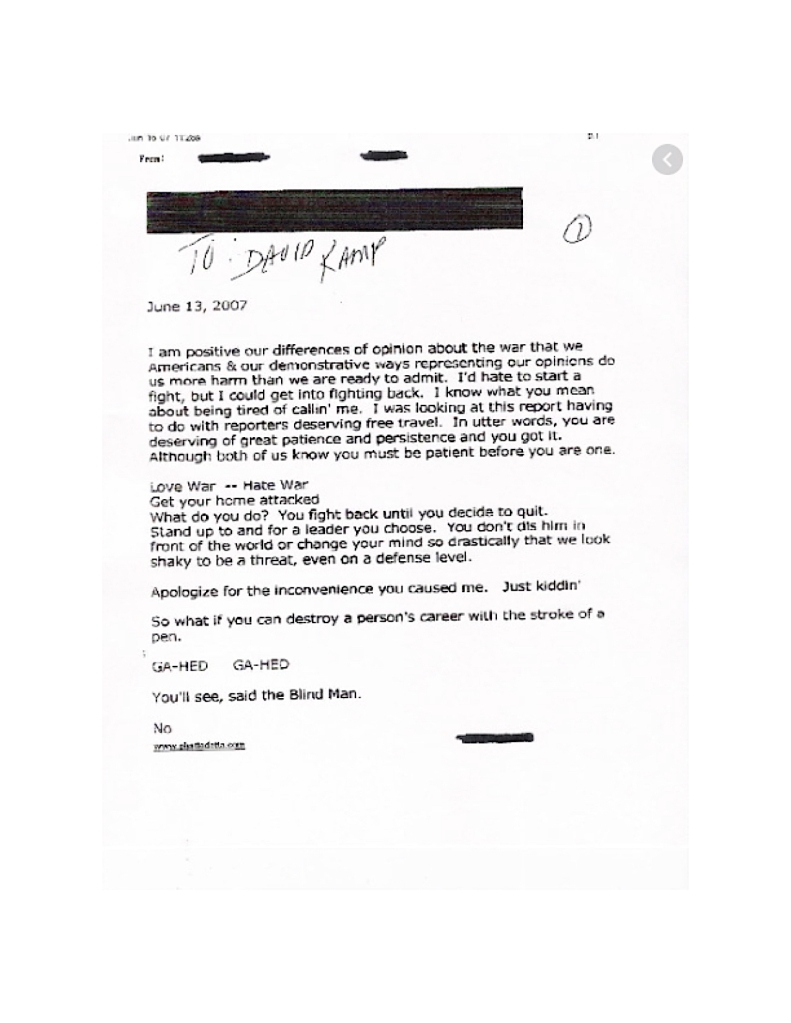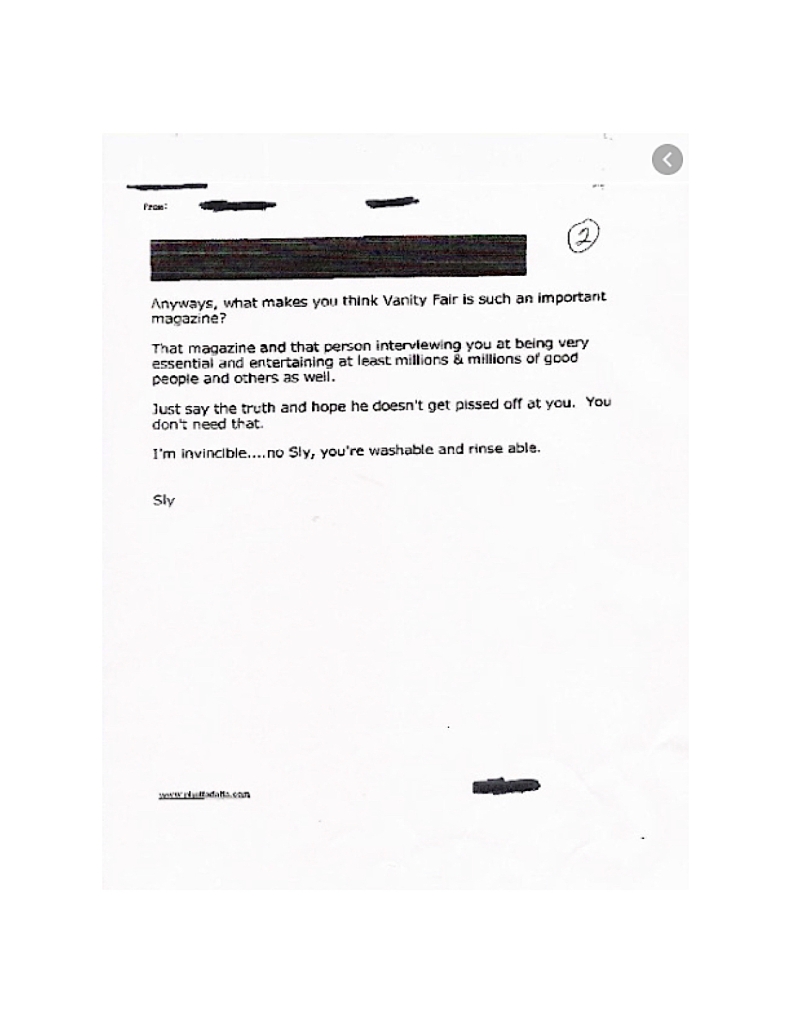“Well, I wear that jacket now and then,” says the man who now lives in New York City. “Somebody hung it
on me yesterday, sayin’ I should be the official musicologist of N’awlins music. But see, when you been workin’ with musicians like [saxophonist] Red Tyler for, like, 40 years, it
sounds like we’re talkin’ about history but to us it’s real personal things. Red Tyler doesn’t remember anything about Little Richard sessions he cut 40 years ago, but he’ll remember some little incident that only musicians would remember. Man, a lotta times we black out the memories, ‘cos they wadn’t all that great.”In last year’s riveting autobiography
Under A Hoodoo Moon, Rebennack lamented,
en passant, “another little bit of vanishing New Orleans”. Does he think all the great Crescent City traditions will eventually be eroded?
“The saddest thing is the amount of New Orleans artists that only had one hit record, There was nobody ever there to look out for anybody’s career, with the exception of Fats Domino, who had Dave Bartholomew. Some o’ the younger cats is startin’ clubs, ‘cos they been so caught in the corner of havin’ no gigs that they actually had to, but there’s very little happenin’. New Orleans is a very poor place, and it doesn’t attract a certain element of investment. Willie Tee just built a new studio, and Allen Toussaint’s startin’ to revamp his place. But, I mean, just compare it to Nashville.”
Almost as central as New Orleans to the Dr John legend is the heroin habit the man hauled around with him for the best part of 40 years, and from which he only properly freed himself six years ago. Reading Under A Hoodoo Moon, you wonder where he found the energy to put one foot in front of the other, let alone make dates on the road and in the studio.
“I look back to my life early on, way back in the ‘50s, and I see that somethin’ was wrong even then,” he says. “Somethin’ should have said, This is not makin’ things better. I have no idea what I was thinkin’. Least I know what I’m thinkin’ today. My life is so much nicer and pleasanter.”
What about the multitude of premature and/or violent deaths with which his book is strewn? Does it ever shock the Doctor when he looks back on the toll that the life took?
“It makes me real disgusted when I see the same stuff goin’ on today. I mean, just two weeks ago in New Orleans one of the young kids in the Rebirth Brass Band got murdered. He was another one of the Lastie family. The number of people in that family who’ve died young is so phenomenally out of synch with any family I’ve ever met, and they were all so talented.”
You could say it’s a miracle that Rebennack himself is still with us today, and clean and sober into the bargain. Vivid in his mind are the words of veteran Dixieland banjoist Danny Barker, who died not long after playing on Mac’s superb Goin’ Back To New Orleans (1992). “Danny said to me right before he passed, ‘A lotta things that happened changed my life, but now I look back and it don’t even seem like that was my life’.”
*
LOOKING BACK, of course, certain uncharitable souls have suggested that Rebennack’s long journey from Gris Gris and Babylon (with their heebie-jeebie lyrics and deranged time signatures) to In A Sentimental Mood and Afterglow (with their faultless big band arrangements of Tin Pan Alley standards) has effectively been a retreat – even a betrayal. He sees it less as a gradual move towards the Harry ConnickJr market than as an inevitable process of deceleration, and makes no apologies for either of his “standards” albums.”I really feel like it’s all music. I’m just tryin’ to learn how to sing in tune – little things like that. At some point I figured I better learn how to be a frontman and how to be a singer. I always felt comfortable playin’, but I’m tryin’ to learn how to do this stuff professionally. That’s the only thing that’s really at all different to me. And now I’m not panicked for chump change or immediate fixes and nervous breakdowns and all o’ that. And I’m gettin’ older, and all of that goes together with something and it’s like, I can take time to enjoy things. As far as the journey I’ve made, it’s like the song says: ‘I have had my fun if I don’t never get well no more’.”
*
ONE OF the lesser-known facts about Mac Rebennack is that he only became Dr John because there was no-one else around to play the part. (The original intention was for Ronnie Barron, sometime member of the Night Tripper’s band and a piano legend in his own right, to assume the role of the mid-l9th century New Orleans root doctor.) It says a lot about the man’s innate humility that for a long time he never saw himself as much more than a glorified sideman.From his earliest days hanging around the great musicians at Cosimo Matassa’s famous studio on Governor Nicholls Street, Rebennack rarely strayed into the spotlight for more than the odd number, the odd single. He penned songs like ‘A Losing Battle’ (for Johnny Adams) and Lights Out (a hit for ‘Jerry Byrne’), but otherwise worked primarily as a bandleader and A&R man. A formidable guitarist, he rapidly became a pianist fit to choogle alongside the great keyboard masters of New Orleans: Archibald, Huey Smith, James Booker and of course Professor Longhair (purveyor, as he memorably puts it in his book, of “deeply-felt spirituals with a rhumba-boogie beat, incantations to the jollamallawalla gods”).
Mac had no loftier ambitions when, in 1965, he followed the trail which had lured so many New Orleans greats to the gold-paved boulevards of Los Angeles. Not that he was exactly enamoured of what he found there as a sessionman. “Walking into a Phil Spector date with massive amounts of people makin’ minimal amounts of music was a total culture shock,” he says. “Just seein’ the kind of money New Orleans guys like Earl Palmer was makin’ blew my mind. When I first went to Earl’s apartment, it was like walkin’ into a cathedral.”
Mildly appalled by the way such Crescent City homeboys as Palmer and Harold Battiste were squandering their talents on the likes of Sonny & Cher, Rebennack decided to carve out a little piece of New Orleans magic in California. Using down time during a Sonny & Cher session at the Gold Star studio where Spector had cut so many hits, he rounded up a band of exiles – Battiste, Jessie Hill, Dave Dixon, Ronnie Barron, Alvin ‘Shine’ Robinson and others – and cut the extraordinary tracks that became the 1968 debut by Dr John The Night Tripper.
By pure coincidence, the exotic and darkly menacing Gris Gris album – featuring the original ‘Walk On Gilded Splinters’, as covered by everyone from Marsha Hunt to Paul Weller – was released into a world only too receptive to all things freaky and deaky. “Because nobody knew anything about New Orleans, everybody thought it was just some psychedelic thing,” Mac remembers. “But it wasn’t. We was so outta synch with what was happening, but people didn’t realise. We thought Gris Gris was just keepin’ a little of the New Orleans scene alive, it dint sound that freaky to me. Man, we didn’t have a clue about hippies. We thought anyone who smoked a joint in public was outta they minds!”
Mac says he only realised how out of step he was when “a little kid, literally” wandered up to him in San Francisco and said, “you guys are like dinosaurs…everybody’s groovin’ on acid and you’re just a buncha junkies!” Actually, they were more than just a buncha junkies; band members like the percussionist Didimus were fairly heavy customers, and most of them (like Mac) had done time.
Rebennack says that when he delivered 1969’s Babylon – a thoroughly wacked-out response to post-psychedelic America replete with choice couplets like “Donate the chef to the charcoal barbecue/transplanted heart sewed to the sole of my shoe” (‘The Patriotic Flag Waver’) – he figured Atlantic would never release it and “it would end the whole Dr John thing so’s I could get back to doin’ some other things”.
Fortunately, the label stuck with Mac long enough for him to team up with Jerry Wexler and record the paean to N’awlins that was Gumbo, and for Allen Toussaint to produce the righteously funky In The Right Place (1973), Dr John’s most successful album to date. Boasting the Top 10 single ‘Right Place, Wrong Time’ alongside the equally lubricious ‘Such A Night’, ‘In The Right Place’ also featured Art Neville’s Meters, then unquestionably the hottest band in New Orleans.
“Everything I ever did with Allen Toussaint is real special to me,” says Rebennack. “Jest playin’ on sessions with him from day one was special, and then it was double special when we did In The Right Place. The Meters was the funkiest little band you could ever find, and the combination of Allen and us was so hip. I felt real good about bein’ on the road with the Meters, but when Allen honed some of those tunes down in the studio it was killer. He’s a piece of work, man. I always look at him like he’s a prince, like he’s some mystical presence.”
The ‘70s success of Dr John notwithstanding, Mac Rebennack never completely gave up his side gig as a star sessionman. It is a mark of his pedigree and longevity that he can talk about playing on a record like Exile On Main Street and make the experience sound as if he’d merely been cutting demos with a bunch of mates. “When you do sessions all the time, every now and then one sticks out. And at the time, that session was somethin’ similar to a lot of other Stones stuff. See, when I’m doin’ a date, I’m waitin’ to hear somebody do somethin’ new”
Rebennack’s book clears up one little mystery about Exile, which is the identity of ‘Amyl Nitrate’, the marimba player on ‘Sweet Black Angel’: turns out it was none other than Didimus, the Night Tripper’s fearsome percussionist. “And I’ll tell you somethin’,” says Mac. “Didimus was real pissed about that credit. Those guys [Messrs Jagger and Richards] don’t know how close they came to gettin’ hurt! I mean, Didimus hurt a lot of people over the years. It was probably good that he couldn’t get a passport to come to Britain.”
Slightly more memorable, for different reasons, was the session he played with John Lennon in December 1973. Was he surprised by the mess Lennon was in when he showed up to play on Rock And Roll?
“At that time I was in a weird zone with John, and with Harry Nilsson and Phil Spector too. I was gettin’ further and further away from John by the minute, and I blame a lot of it on that chick who was hangin’ around [May Pang]. I always think things wouldna been so bad had she not been there. That situation was bad, and it led to some incidents with John where I had to just cut him loose. Last time I saw him was when he was doin’ a record in New York and there was the same set of people all around him, and I had to get out of there. I told [guitarist] Hugh McCracken to tell John l said goodbye.”
One gets the feeling that Mac Rebennack is not overly impressed by the egocentrism of his fellow rock’n’roll stars. Fair or unfair?
“Well, you know what it’s like. When we was in Paris recently and the Stones was playin’, I felt like seeing some o’ the people. But I said, Lets go see ‘em after the gig, ‘cos I don’t wanna be around all that shit. Even when I was in the middle o’ that shit in the ’70s I couldn’t handle it. It all started when they screamed for The Beatles, ‘cos they wasn’t even listening to the music. It’s like, a whole other thing is happenin’. I like it better if they’re dancin’ or something – at least connected in some way to the music.”
I ask him if he feels any differently about Van Morrison, whose Rebennack-produced album A Period Of Transition was the recipient of some undeserved flak when it was released in 1977.
“Van is a deep cat. That poetry that comes out of him is like automatic writing or just spiritual flows. It’s so hip, man. He’s still got that thing and it’s so powerful. I just got blew away the other night when I heard him doin’ a thing on the radio and it just brought me to a place, man, it touched me real good. I still think if the original idea of me and [veteran R&B producer] Henry Glover doin’ somethin’ with Van had come off, it woulda been a whole other thing. I think maybe if I had been around Van a little longer, I would’ve started readin’ him better.”
*
IN UNDER A HOODOO MOON, Rebennack says that his worst nightmare was always that he’d “end up a solo-piano lounge act, staring at Holiday Inns or bowling alleys for the rest of my natural life”. Ironic, therefore, that two of his best-loved albums are the solo-piano collections Dr John Plays Mac Rebennack (1981) and The Brightest Smile In Town (1983), both recorded for the tiny Baltimore label Clean Cuts. Ironic, too, that one of his dearest friends and principal inspirations, James Booker, did a long stint in a Pennsylvanian cocktail lounge in the early ‘70s.Of all the musicians namechecked by Mac Rebennack, the mercurial Booker is the one who seems to haunt him the most, and the one who perhaps best embodies the tragicomic spirit of New Orleans’ musical history.
“Booker and me was so close,” says Mac, “and then t’ward the end we weren’t tight any more, and I felt bad about it. It broke my heart. After he lost his eye, he lost all the people in his life that he was close to, and he flipped. He started writin’ these newspaper articles that became stranger and stranger. And he’d go to this seminary in Mississippi and chill out, and there were so many weird things going on. I used to try to talk to him, because I felt like I owed him so much. But the more I would try to open him up the worse it would get. He’d say things like, ‘I’m gonna lose my other eye and then I’m gonna be like Ray Charles.’ It got really scary, and when he started doin’ these little solo gigs it got even stranger. He was writin’ songs that insulted people in the clubs and he was sabotaging everything he could.”
After Booker died of a cocaine overdose in November 1983, it transpired that due to a mix-up he’d been left unattended in a wheelchair in New Orleans’ Charity Hospital. “I heard that he’d been dead for a while,” Rebennack says grimly of the man who was a regular fixture of his band for several years. “That’s a terrible thing, and he didn’t deserve it. All of his life was really unnecessarily bad.”
Mac’s tone as he says this almost suggests the guilt of the concentration camp survivor: how come I’m still around when so many of my junco partners is dead and buried? But then he remembers his other great friend Doc Pomus, the New York songwriter who co-wrote most of Mac’s City Lights and Tango Palace albums and whose main concern, battling heroically against cancer on his death bed in 1991, was that the song ‘I’m On A Roll’ should be finished properly.
“It was somethin’ he was still writin’ in the hospital,” laughs Rebennack, “and the last words Doc ever said to me was, ‘Make sure it sounds like one o’ them Louis Jordan songs!” Fittingly, Mac performs the song on the recently-released Pomus tribute album Till The Night Is Gone.
*
ONE OF the tunes Dr. John pulled out of the cupboard for Afterglow was ‘There Must Be A Better World Somewhere’, a mournful Pomus-Rebennack ballad which earned B.B. King a Grammy when he cut it back in 1981. By way of concluding our interview, I ask Mac if the song’s sentiments still speak for him today.”That song means somethin’ different to me than maybe the way it looks on the surface,” he replies. “It came out of me tellin’ Doc about this old hymn and him coming up with a little vignette. It really turned me out when I heard Irma Thomas doin’ it on the Doc Pomus tribute album. She did it almost like it was originally written – a little churchy, a little in the vibe of Percy Mayfield’s ‘Please Send Me Someone To Love’.
“See, it ain’t about wallowin’ in pain. It really is like a hymn to me.”












